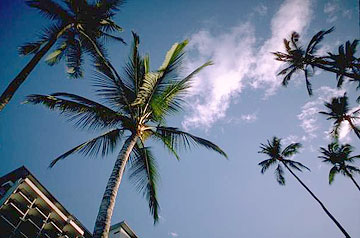Salinity Management Guide

What factors affect evapotranspiration?
The rate of evapotranspiration depends on climatic factors — especially temperature, sunlight, wind speed, and humidity. Usually, an increase in the temperature, the wind speed, or the amount of sunlight results in a corresponding increase of evapotranspiration. Humidity has the opposite effect: when it increases, ET decreases.
The rate of evapotranspiration also depends on the species of plant. That's because species differ in their abilities to regulate water and to adapt physiologically to stress induced by scarcity of water. The degree of plant cover is an important factor as well.
Even cultural practices, such as the frequency of pruning or mowing, the application of fertilizer, and the frequency and extent of irrigation, can alter the plants’ rates of ET and the rate at which a landscape consumes water.
Usually, ET is expressed in units of inches per day or millimeters per day and sometimes in inches per month.
The water consumption rate (ET rate) of a landscape in southern California can be fairly high, moderate, or low. During the summer, a site located in an arid inland valley frequently will have an ET in the range 0.18 to 0.28 inch per day. A cool coastal site, on the other hand, during the same period often will have an ET of 0.14 to 0.24 inch per day. The ET at either site can range as low as 0.01 inch per day, though that occurs more often at the coastal site than it does at the inland one.
| « Previous page | Next page » |